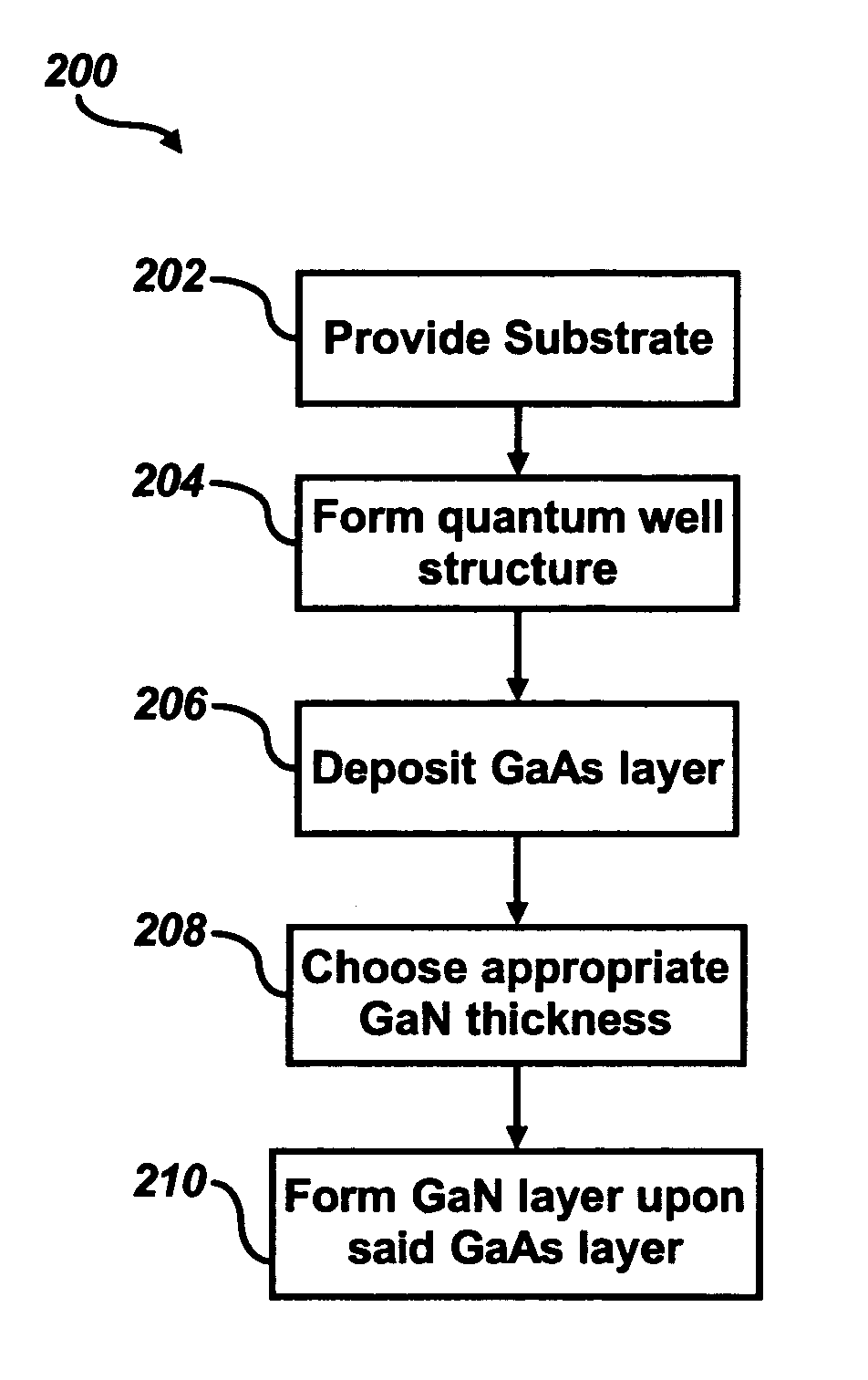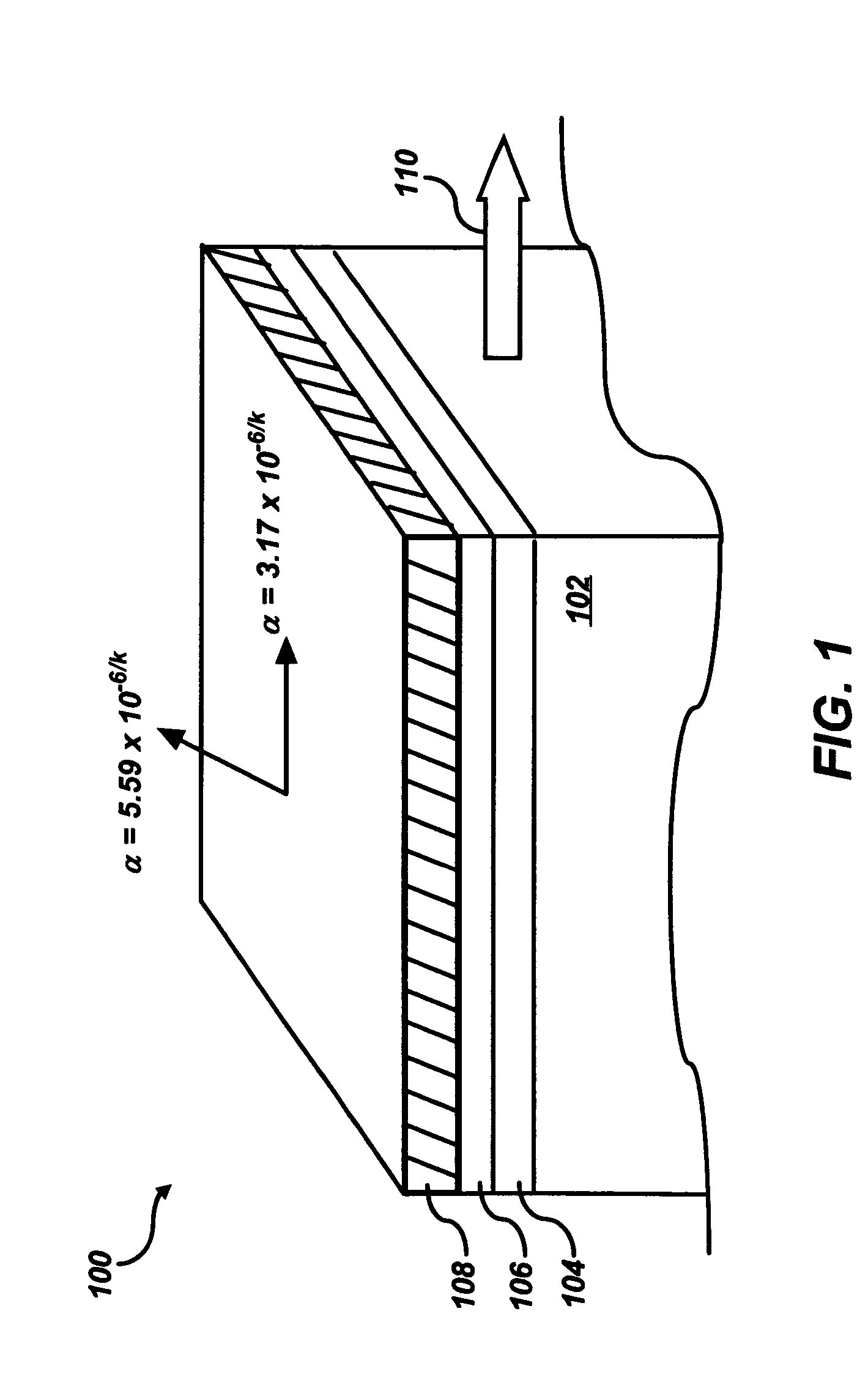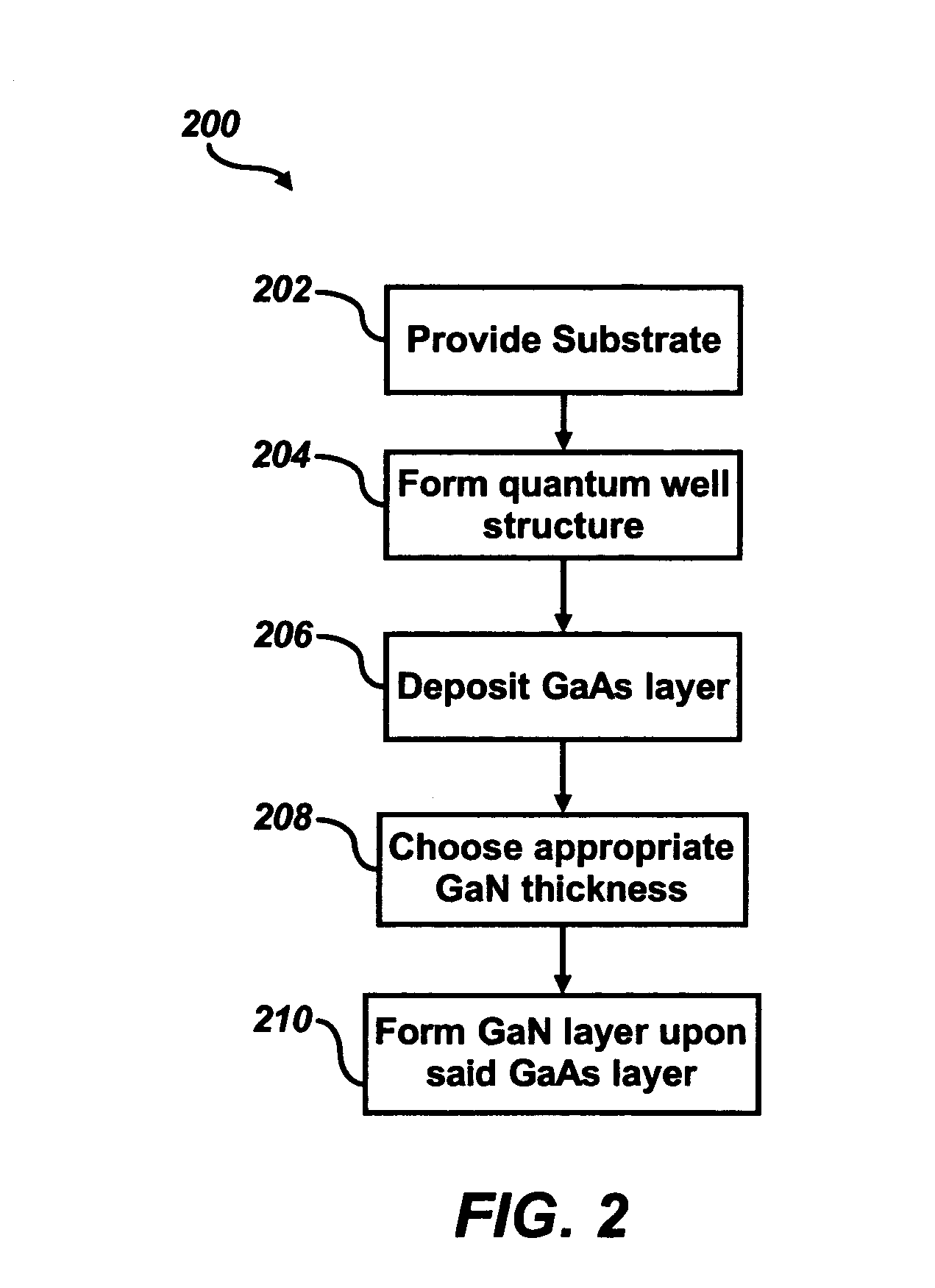Creation of anisotropic strain in semiconductor quantum well
a quantum well and anisotropic technology, applied in the field of semiconductor electrooptic devices, can solve the problems of difficult to achieve proper anisotropic strain, additional and often expensive complications in the manufacturing process, and the bonding and lifting off procedures
- Summary
- Abstract
- Description
- Claims
- Application Information
AI Technical Summary
Benefits of technology
Problems solved by technology
Method used
Image
Examples
Embodiment Construction
[0017]The particular values and configurations discussed in these non-limiting examples can be varied and are cited merely to illustrate embodiments of the present invention and are not intended to limit the scope of the invention.
[0018]FIG. 1 illustrates a perspective view 100 of a quantum well structure, which can be implemented in accordance with a preferred embodiment of the present invention. FIG. 1 depicts a substrate 102 upon which an MQW layer 104 (i.e., a quantum well layer) can be formed. A first crystalline layer, such as, for example, a GaAs layer 106, can be deposited upon the MQW layer 104. Thereafter, a second crystalline layer, such as, for example, a GaN layer 108, can be formed upon the GaAs layer 106. Note that in general, the second crystalline layer possesses a crystalline phase, which is different than the crystalline phase of the layer upon which it is deposited.
[0019]It can be appreciated by those skilled in the art that although GaAs and GaN are described he...
PUM
 Login to view more
Login to view more Abstract
Description
Claims
Application Information
 Login to view more
Login to view more - R&D Engineer
- R&D Manager
- IP Professional
- Industry Leading Data Capabilities
- Powerful AI technology
- Patent DNA Extraction
Browse by: Latest US Patents, China's latest patents, Technical Efficacy Thesaurus, Application Domain, Technology Topic.
© 2024 PatSnap. All rights reserved.Legal|Privacy policy|Modern Slavery Act Transparency Statement|Sitemap



